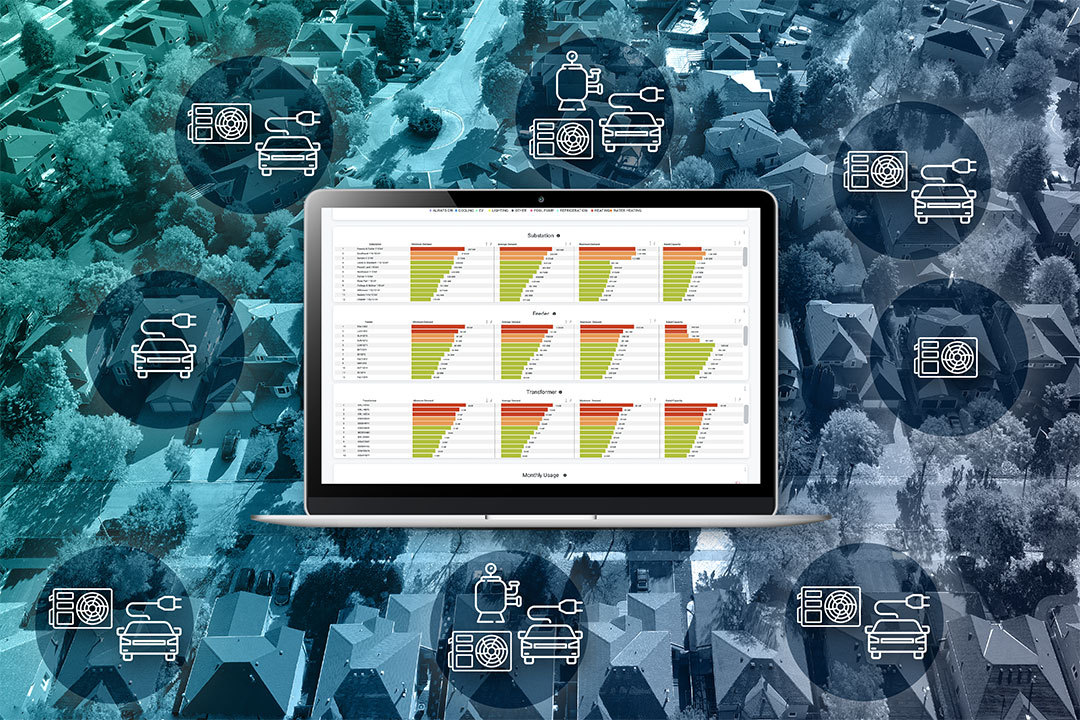Join us for a webinar on Oct 10 to learn how Bidgely is "Empowering Utilities with GenAI:
A Guide to Enhanced CX and Grid Management". Register here.


In today’s rapidly evolving energy landscape, utilities face unprecedented challenges with increasing DERs, electrification and changing customer behaviors. In response, forward-thinking energy providers are increasingly turning to Non-Wires Alternatives (NWAs) as compelling solutions that go beyond traditional infrastructure investments.
“Historically, we have looked closely at how our traditional wires solutions have helped our customers to maintain reliability,” explains Dhaval Patel, Senior Network Manager at Hydro One. “But because of the changing nature of the electrification load and customer behavior, we have started looking for non-wires solution alternatives, and data is a big help in identifying the best use cases for NWAs.”
This shift in approach isn’t just about managing current challenges — it’s about positioning utilities for future success. Over the next decade, utilities that effectively leverage NWAs and data-driven capital investment strategies will enjoy significant advantages: stronger ROI, reduced operational costs and more resilient business structures.
1. Enhanced Forecasting Capabilities
The foundation of effective grid management starts with accurate forecasting. By developing a behind-the-meter understanding of appliance ownership and usage patterns, utilities can create comprehensive territory-wide load profiles with unprecedented detail.
By combining these detailed load profiles with broader housing and appliance ownership trends, utilities are able to forecast peak load 5-15 years into the future with reliable accuracy. This granular approach also facilitates scenario analysis for various electrification pathways — revealing exactly how and when heat pumps, EVs and other DERs will impact the grid.
Patel confirms that Hydro One is pursuing just such a strategy: “We have been collecting a lot more customer data,” Patel explains. “However, primary monitoring and data collection points were at the feeder or station levels, but we never looked behind the meters. Now, by analyzing behind-the-meter customer behaviors, we try to sense how many electrical vehicles customers are adopting.”
2. Targeted Non-Wires Alternatives Programs
With AI-powered analytics, utilities can examine load curves across their grid assets to identify maximum, minimum, and average demand patterns. This precision reveals exactly which substations are approaching capacity constraints and which specific appliances are driving peak demand.
Armed with this intelligence, utilities can design highly effective NWA programs that:
“Now we are looking more at customer behaviors and customer engagement,” Patel notes. “Looking at the behind-the-meter behaviors helps us understand how it integrates into the load profile, how it impacts our stations, and how we can better manage our stations and load profiles at a micro level.”
Consider the practical application: By analyzing household consumption patterns, utilities can identify customers who charge electric vehicles or run pool pumps during peak hours and target them specifically for load shifting programs — creating immediate benefits for both the customer and the grid.


3. Optimized Infrastructure Investment
While NWAs offer powerful alternatives to traditional infrastructure, strategic grid investments remain essential. The challenge is knowing exactly where and when to deploy capital for maximum impact.
“We are trying to understand the heating electrification impact on our grid as heat pumps are becoming really popular in Ontario. This data helps us to accurately forecast load, which helps identify the future grid investments we’ll need to make and the constrained areas that we need to alleviate.”
Using a comprehensive data approach, utilities are able to:
The benefits extend beyond traditional grid assets. With insights into current and future EV adoption patterns, utilities can strategically place public charging infrastructure in locations that will deliver the greatest value.
The energy landscape is transforming rapidly, driven by electrification, customer behavior shifts, and climate imperatives. Utilities that embrace data-driven approaches to grid management will be best positioned to navigate these changes successfully.
By developing comprehensive visibility into both grid-level and behind-the-meter dynamics, energy providers can balance reliability with cost-effectiveness through a strategic mix of NWAs and targeted infrastructure investments.
As Patel emphasizes, “Data serves as a basic foundation.” That foundation enables utilities to build a more resilient, flexible, and customer-centered grid that will meet the challenges of today while preparing for the demands of tomorrow.
The future of energy is already here—and it’s being shaped by those who understand that in an increasingly complex grid environment, data-driven decision making is the key to success.
For more information about Bidgely’s DER grid planning capabilities, download this guide to Bottom-Up Grid Planning Through Behind-the-Meter DER Intelligence.

Ai is still evolving and may not be perfect. Always verify important details for accuracy.

